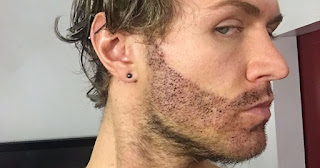Everything You Need to Know About a Beard Transplant
1. Introduction
Growing a full and well-defined beard isn't always easy. Genetics, medical conditions, and hormonal imbalances can all contribute to thin or patchy facial hair growth. A Beard Hair Transplant in Saudi Arabia offers a solution by transplanting hair follicles from one area of your body to your beard area.
2. What is a Beard Transplant?
A beard transplant is a cosmetic procedure that involves harvesting hair follicles from a donor site (usually the back of the head, where hair growth is dense) and transplanting them to the recipient site (the beard area). This procedure is a subset of hair transplantation techniques used for scalp hair restoration.
3. Who is a Suitable Candidate?
Men experiencing beard hair loss, sparse growth, or those desiring a thicker beard are potential candidates for a beard transplant. It's important to have realistic expectations and consult with a qualified surgeon to determine if you're a suitable candidate for the procedure.
4. Benefits of Beard Transplants
Beard transplants offer several benefits, including:
Natural Appearance: Transplanted hair looks and feels natural.
Permanent Solution: The transplanted hair follicles continue to grow.
Customization: The procedure allows you to design your beard's shape and style.
Boosted Confidence: A fuller beard can enhance self-esteem and confidence.
5. Preparation for the Procedure
Before the procedure, your surgeon will provide detailed instructions. These might include avoiding alcohol and certain medications that can thin the blood. It's essential to follow these guidelines for a successful transplant.
6. Types of Beard Transplants
There are two main techniques for beard transplants: FUE and FUT.
7. FUE (Follicular Unit Extraction) Beard Transplant
FUE involves individually extracting hair follicles and transplanting them to the beard area. It's a minimally invasive procedure with less scarring and quicker recovery compared to FUT.
8. FUT (Follicular Unit Transplantation) Beard Transplant
FUT involves removing a strip of skin from the donor area and then dissecting it into individual follicles for transplantation. This technique is suitable for those requiring a larger number of grafts.
9. Beard Transplant Procedure: Step-by-Step
Anesthesia: Local anesthesia is administered to both the donor and recipient areas.
Extraction: Hair follicles are extracted from the donor site.
Graft Preparation: Extracted follicles are prepared for transplantation.
Incisions: Tiny incisions are made in the recipient area.
Transplantation: Hair follicles are carefully placed into the incisions.
Post-Procedure Care: Instructions for aftercare are provided.
10. Recovery and Aftercare
Recovery typically involves mild discomfort and redness. Following post-operative instructions is crucial to ensure proper healing. Avoiding strenuous activities and following a recommended skincare routine is essential during this phase.
11. Expected Results
The transplanted hair will fall out initially but then start to regrow within a few months. Significant improvement in beard density can be observed within 6 to 12 months after the procedure.
12. Potential Risks and Complications
Common risks include infection, scarring, and ingrown hairs. These risks can be minimized by choosing a skilled and experienced surgeon and following post-operative care guidelines.
13. Cost Considerations
The cost of a beard transplant varies depending on factors like the technique used, the number of grafts, and the geographic location of the clinic.
14. Choosing the Right Clinic
Research thoroughly before selecting a clinic. Look for reviews, before-and-after photos, and the surgeon's qualifications. Choose a clinic with a proven track record in hair transplantation.
15. Conclusion
A beard transplant can transform your appearance and boost your confidence. With advancements in medical technology, this procedure offers a permanent solution to achieving the beard you've always wanted.



Comments
Post a Comment